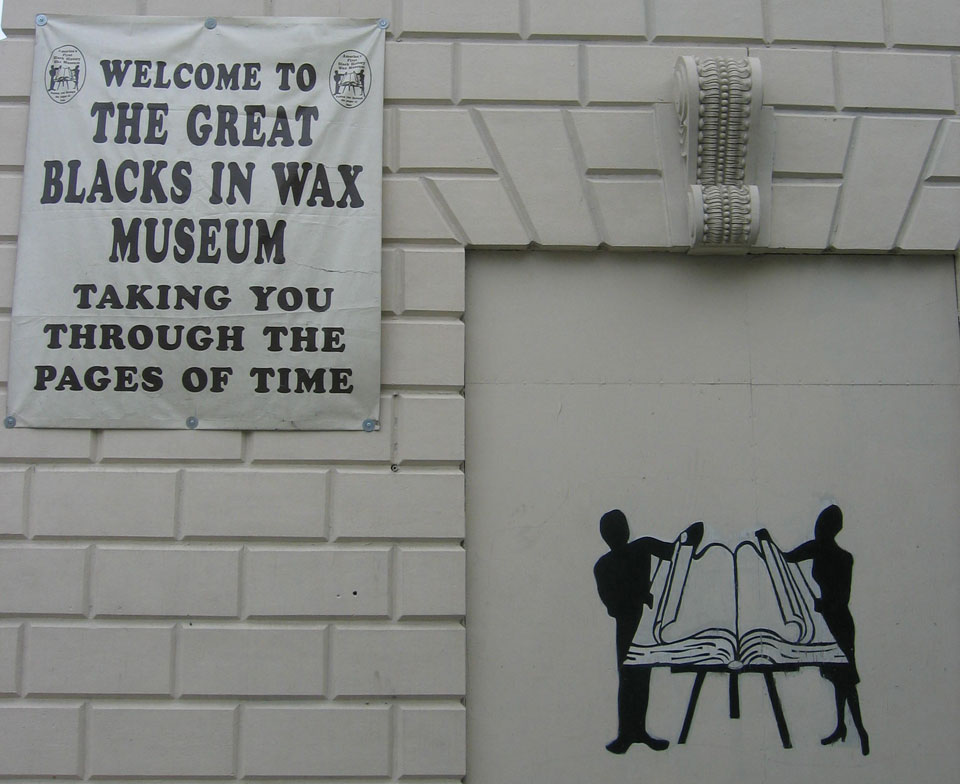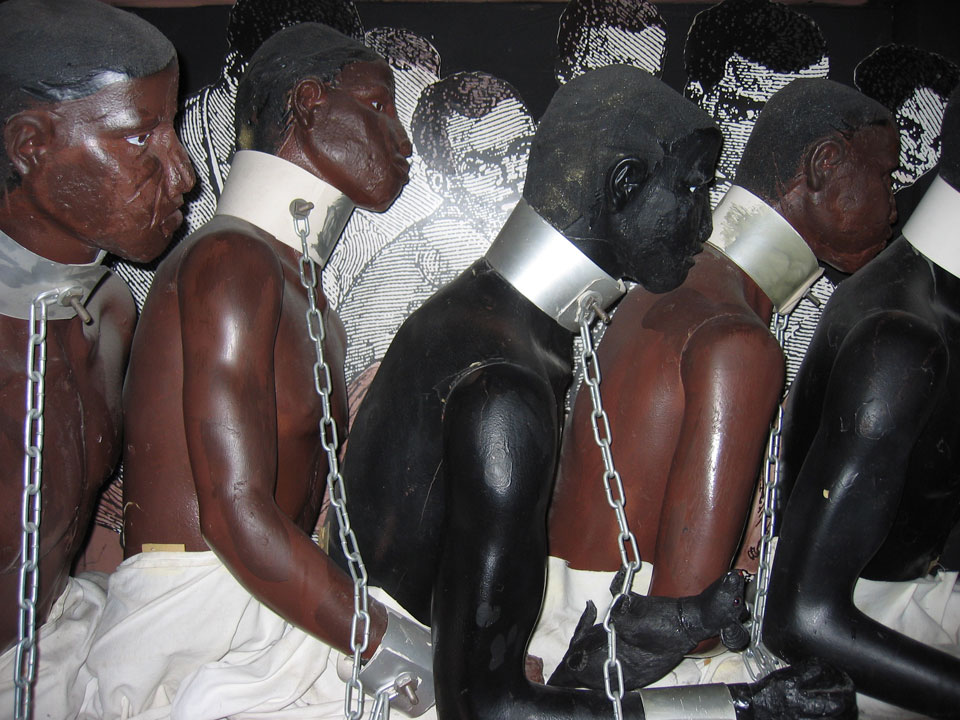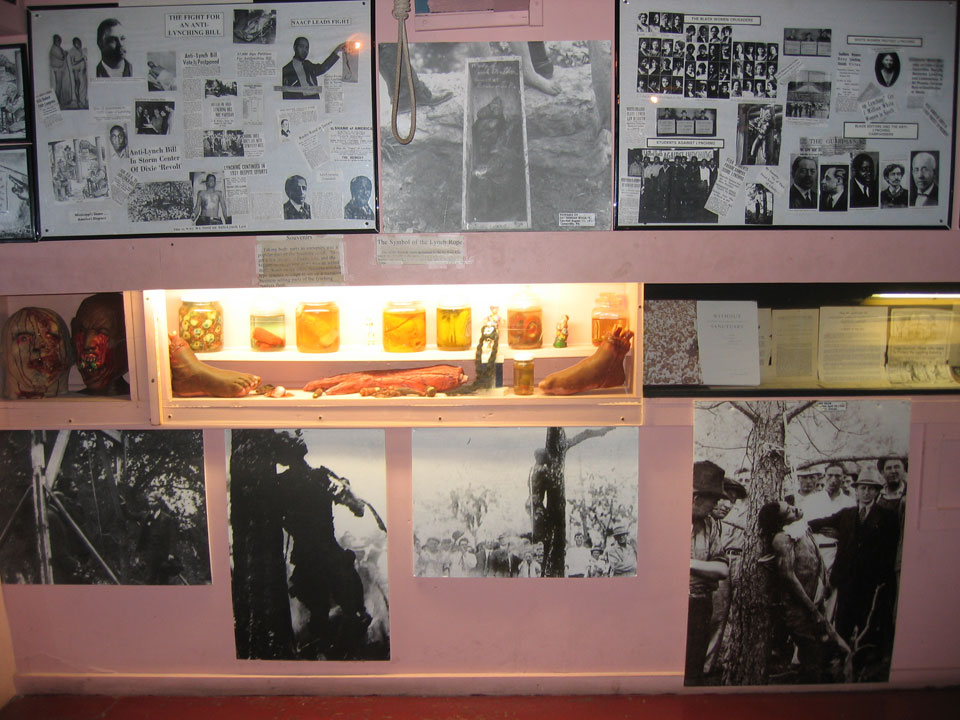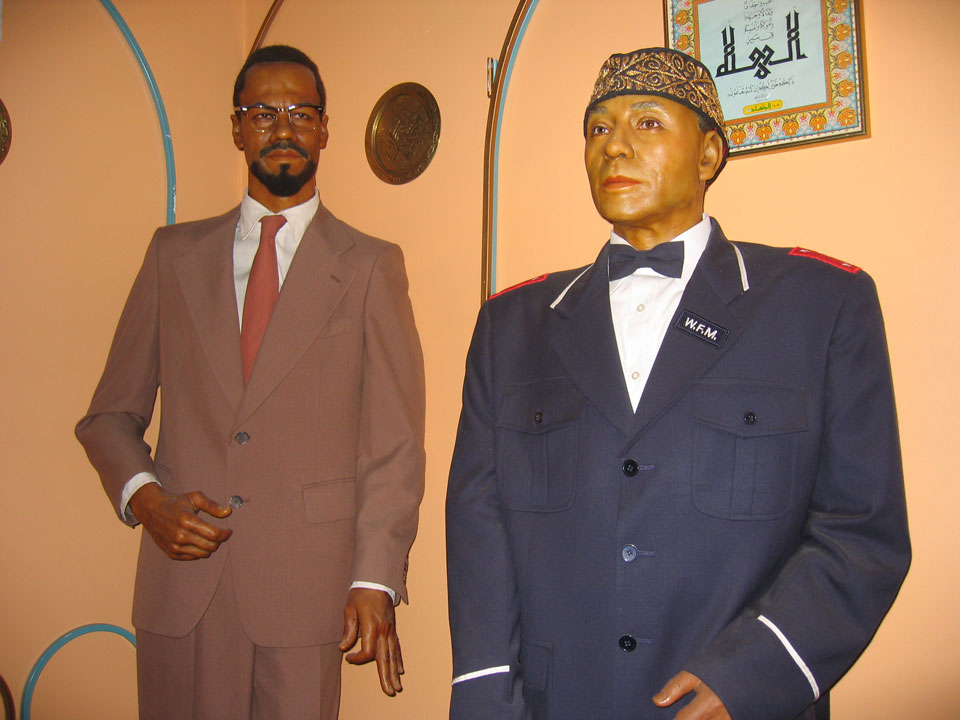The Great Blacks in Wax Museum
It is said that Baltimore is a small city if you are white and big city if you are black. As if to prove this point, The Great Blacks in Wax Museum is Baltimore’s most visited museum, pacing ahead of more traditional venue like the Baltimore Museum of Art, the Walters Art Museum, the Contemporary Museum, the American Visionary Art Museum and the wide assortment of oddball spaces like the American Dime Museum (featuring circus artifacts, not 10-cent coins). Initially established in a small storefront space in 1983, The Great Black in Wax Museum has grown and now appeals to a large number of citizens, which speaks volumes not only about the specific dynamics of culture and demographics in Baltimore but also raises questions about who is visibly represented and who is erased from mainstream versions of U.S. history. Currently housed in a renovated firehouse on Baltimore’s embattled east-side, the museum primarily displays life-size wax figures of historical and contemporary personages. Great Blacks in Wax declares that its mission is to “Use education, history, and example to help mainly culturally devastated youth overcome feelings of alienation, defeatism and despair” and to give “African-Americans a sense of continuity, precedence and foundation so that they may know the direction in which they are or should be heading.”
The sense of urgency in the language of its mission statement is counter-balanced (with two exceptions) in the subdued nature of its displays. Near the museum’s entrance a simple juxtaposition of a photograph of a slave’s whip-scarred back next to a wall-mounted vitrine containing a cotton plant resonated with talismanic power, viscerally evoking the violence of the economic system of bondage. The wax figures are arranged chronologically, from Ancient Africa through Slavery, Jim Crow, the Harlem Renaissance and Civil Rights, up to the present. The cast of characters include the familiar: Harriet Tubman, Fredrick Douglas, Crispus Attucks, Marcus Garvey, Rosa Parks and Martin Luther King Jr., alongside lesser-known figures like Mother Mary Elizabeth Lange, founder of the oldest Catholic order of black nuns. The majority of the figures are situated in non-dramatic settings although a handful inhabit simple theatrical sets, like the scene showing a fleeing slave as he contorts through a stove pipe into Tubman’s liberating arms.
“The Slave Ship” is more elaborate narrative scenario evoking in gruesome detail the tribulations of African men, women, and children during the Middle Passage. A Plexiglas panel quotes Olaudah Equiano captured by slave traders at age 7: “Having never before seen the sea, a shop, nor a white man I was filled with astonishment and horror. I felt I had got into a world of bad spirits and the strange looking people were going to eat me.” Its an unsettling experience to walk through the gallery of scenes depicting rape, torture, forced feeding, and other such atrocities as throwing the sick or enfeebled slaves overboard into the mouths of attentive sharks, and the while a chorus of reverbed voices whispering “Remember, remember!” It is kitschy and haunting simultaneously. One assumes that the voices represent the spirits of these long-perished imprisoned Africans and the moment one must ask, “What should I remember? How can I remember?” The answers depend upon one’s racial history, political beliefs, and powers of empathy, but also, and it seems so awful to say this, one’s ability not to laugh at the sheer hokey-ness of the display. What to do with this discomfort, this odd combination of outrage and irony? If this museum directs itself to “culturally disadvantaged youth,” should the rhetoric of its displays be measured only within this context? Similar questions about audience, pedagogical intent, and abject literalism arise while visiting other mixed agenda institutions like the Museum of Tolerance in Los Angeles.
“The Lynching Room” is no laughing matter and a label warns that children should not enter. It also contains wax figures placed in scenes that could effectively serve in an amusement park house of horrors, but the accompanying photographs of actual lynching provide irrefutable anchors to the macabre dioramas. A list of 5,000 names of lynching victims extends the power of this display’s historical specificity. Wall texts inform the spectacles of terror with details like “taking body parts as souvenirs was a popular part of the lynching ritual. To get a toe, an ear, a finger, lips, and the biggest prize, genital parts, was an added thrill.” Nearby, a newspaper account of an African-American man who was dragged to his death behind a pickup truck in 1999 reminds us that visceral racial hatred has not been purged from our culture. The culturally enshrined heroism of the Civil Rights Movement provides the culminating iconography for The Great Blacks in Wax Museum. A handcuffed Rosa Parks is led off a bus, Malcolm X inexplicably stands shoulder-to-shoulder with Elijah Mohammed, and Martin Luther Kind stands by the exit, looking visionary and beatific, a black leather Bible tucked into his hand as if blessing visitors before they step out into the violent streets. There are a handful of post-Civil Rights figures but overall historical thrust of the museum seems to come to a close with that generation of leaders as if to suggest there is no significant history after MLK, Jr. That the museum does not mention his mentor Elijah Mohammed is emblematic of the manner in which the mythic is encouraged over the more complex and contradictory details of history.
As if stuck in amber, the pantheon of civil rights martyrs and saints float in an almost religious glow, lending a sense of sacred to that history, but also sealing it shut, embalming the eyes on the prize. As Marina Warner has explored in her 1995 essay “Waxworks and Wonderlands,” wax figures, unlike other representations, seem to hover between life and death; they glow with an internal light yet are impervious to the ravages of time. For many visitors, this sense of suspended time in which we are granted the fantasy of walking among the gods and heroes whose vision and wisdom may seem distant or even absent in out current political climate can inspire a near-religious experience. We know that there is a post-Civil Rights sensibility that includes jokes about Rosa Parks the movie Barbershop, Thelma Golden’s curatorial controversies, and Kara Walker’s incendiary silhouettes, but maybe we should suspend out critical judgment for a moment and acknowledge that these more recent iterations of Black power might be untenable – therapeutically though certainly not theoretically – in the specific setting this museum is trying to address.
I observed a young woman seemingly entrranced at the display of Eubie Blake sitting at a piano with Billie Holiday at his shoulder. As she turned to leave she whispered “Goodbye Billie,” and strolled down the corridor lined with the figures of Frederick Douglass, Marcus Garvey, Zora Neale Huston, James Baldwin, Jesse Owens, Jackie Robinson and Haile Selassie, waving at each other of them as she passed. Despite the hermetic quality of the atmosphere, this accessible sacredness might be indispensable. Given that our culture offers so little else beyond NBA stars and hip-hop heroes, we might be forgiven for a least hoping that The Great Blacks in Wax Museum could through occasional epiphany, or the talismanic power of its icons, magically turn a life or two around.
Originally Published in artUS, No. 5/6, January 2005





